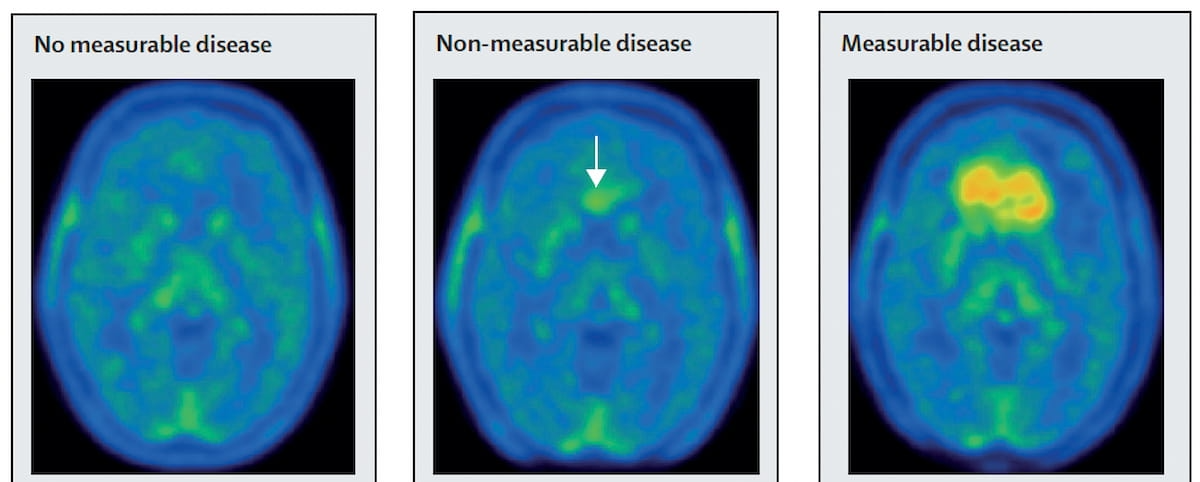- AI
- Molecular Imaging
- CT
- X-Ray
- Ultrasound
- MRI
- Facility Management
- Mammography
Emerging PET Agent Gets FDA Fast Track Designation for Glioma Imaging
A positron emission tomography (PET) agent that targets LAT1 and LAT2 membrane transport proteins, TLX101-CDx or 18F-floretyrosine could be utilized to help characterize progressive or recurrent glioma.
While current guidelines note the use of amino acid positron emission tomography (PET) for brain cancer imaging, no targeted PET agent has garnered approval from the Food and Drug Administration (FDA) for this indication.
That may be changing in the near future. The FDA has granted fast track designation for TLX101-CDx (18F-floretyrosine), an investigational PET agent, for the characterization of progression or recurrence of gliomas, which reportedly account for 80 percent of malignant brain tumors.1,2
Targeting LAT1 and LAT2 membrane transport proteins, 18F-floretyrosine (18F-FET) may provide a viable alternative to magnetic resonance imaging (MRI), according to Thomas A. Hope, M.D., the vice-chair of operations and strategy, and professor in residence with the University of Southern California, San Francisco (UCSF) Department of Radiology and Biomedical Imaging.
As per the recently introduced PET RANO 1.0 criteria, one can see PET examples of inconspicuous findings (left), slightly increased tracer uptake (middle) and increased tracer uptake demonstrating measurable disease in the area of interest (right). The FDA recently granted fast track designation to TLX101-CDx for the imaging of gliomas. (Images courtesy of Lancet Oncology.)

“There is critical unmet need to improve the diagnosis and management of glioma, particularly in the post-treatment setting … . 18F-FET has the potential to help determine if a glioma is truly progressing or undergoing a treatment-induced change, known as pseudo-progression, where MRI– the standard of care – can often be inconclusive,” noted Dr. Hope.
In recently proposed criteria for assessing diffuse gliomas, researchers suggested that amino acid PET imaging has significant potential.3
“Amino acid PET imaging is a promising tool to measure (tumor) tissue and provides additional information regarding (tumor) extent and activity compared with MRI,” wrote lead review author Nathalie L. Albert, M.D., a senior physician and professor for nuclear medicine at the Ludwig Maximillian University of Munich in Munchen, Germany, and colleagues.
Telix Pharmaceuticals noted it is currently planning to submit a New Drug Application (NDA) for the use of TLX101-CDx (Pixclara™) in adult and pediatric patients.
References
1. Telix Pharmaceuticals. TLX101-CDx (Pixclara™) granted FDA fast track designation. PR Newswire. Available at: https://www.prnewswire.com/apac/news-releases/tlx101-cdx-pixclara-granted-fda-fast-track-designation-302117301.html . Published April 16, 2024. Accessed April 16, 2024.
2. Goodenberger ML, Jenkins RB. Genetics of adult glioma. Cancer Genet. 2012;205(12):613-21.
3. Albert NL, Galldiks N, Ellingson BM, et al. PET-based response assessment criteria for diffuse gliomas (PET RANO 1.0): a report of the RANO group. Lancet Oncol. 2024;25(1):e29-e41. doi: 10.1016/S1470-2045(23)00525-9.
(Editor’s note: For related content, see “MRI Findings Show Vorasidenib More than Doubles Progression-Free Survival in Patients with Grade 2 IDH Gliomas,” “FDA Clears Magnetic Resonance Spectroscopy Platform for Non-Invasive Assessment of Brain Chemistry” and “Image IQ Quiz: 28-Year-Old Male with Visual Impairment.”
Emerging Perspectives on PSMA PET Radiotracers: An Interview with Kenneth J. Pienta, MD
April 24th 2024In a recent interview, Kenneth J. Pienta, M.D., discussed the impact of piflufolastat F18, current directions in research with other PSMA-targeted radiotracers and future possibilities for the role of PSMA PET in the imaging paradigm for prostate cancer.
PET Imaging Study Suggests Possible Chemotherapy-Free Pathway for Treating Early Breast Cancer
April 5th 2024Utilizing PET imaging to assess pathologic complete response to the combination of trastuzumab and pertuzumab for patients with HER2-positive breast cancer, researchers noted a 94.8 percent rate of invasive disease-free survival at three years.
FDA Clears Remote Scanning Support Platform for MRI, CT and PET/CT
March 25th 2024The multimodality system nCommand Lite reportedly facilitates real-time remote imaging guidance on scanning parameters and procedure assessments to licensed technologists for a variety of imaging modalities including CT and MRI.
